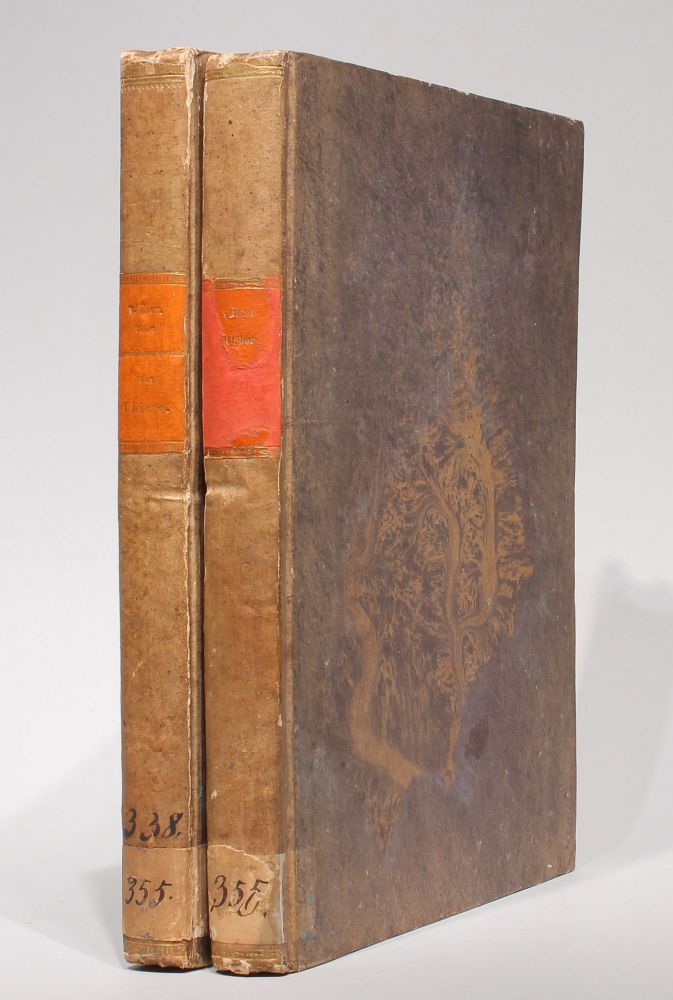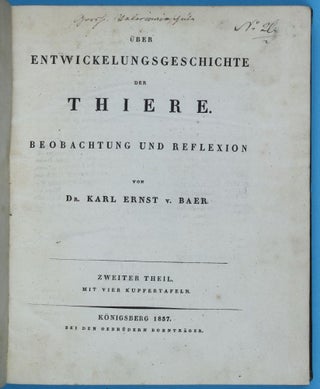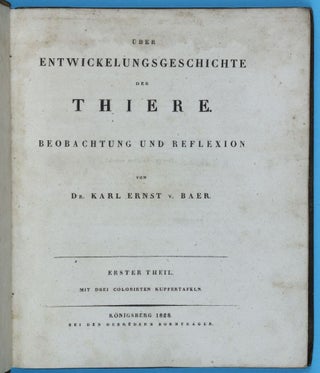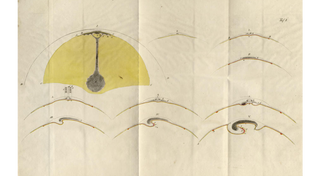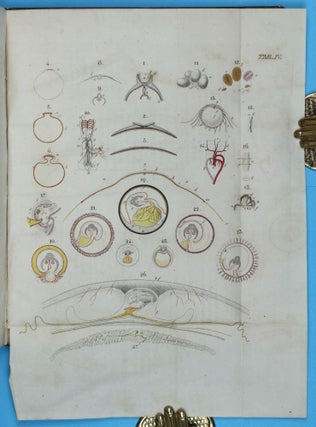The foundation treatise on the embryology of the higher animals
Über Entwickelungsgeschichte der Thiere. Beobachtung und Reflexion.
Königsberg: bei den Gebrüdern Bornträger, 1828.
1st Edition. Hardcover. Near Fine. Item #001959
1828-37. 3 parts in 2 volumes, 4to (246x206 mm). xxii, 271, [1], [2:errata] pp.; [4], 315, [1] pp., including 7 engraved plates (4 hand-coloured, all on stubs) and one folding letterpress table. Contemporary boards, red gilt morocco spine labels (one chipped), early ink shelfmark on spines, minor browning and very little occasional spotting, title page of part 1 somewhat soiled. Provenance: Hugo Schauinsland (1857-1937), zoologist (inscription "Dr. H. Schauinsland, Königsberg, 1883" to first flyleaf); Prof. James Dixon Boyd (1907-68), Irish-American anatomist. A fine set. ----
PMM 228b; Horblit 9a; Norman 101; Garrison-Morton 479; Grolier Medicine, p.215; Wellcome II, p.84. - FIRST EDITION OF THE "FOUNDATION TREATISE ON THE EMBRYOLOGY OF THE HIGHER ANIMALS" (Horblit 9a). "Continuing the work of his friend and collaborator Christian Heinrich Pander, Baer observed the formation of the germ layers and established the germ layer theory. He described the way in which the layers formed various organs by tubulation, and he emphasized that the development of the embryo is from the apparently homogeneous to the obviously heterogeneous. In this he finally refuted the long held and much discussed theory that embryonic parts might be preformed in the egg. The publication of this book provided a solid basis for the further systematic study of mammalian development" (Grolier Medicine, p. 215). After the publication of volume I, there was a delay of nearly 10 years while the publisher waited for Baer to complete volume II. In 1837, at the insistence of subscribers to the work, the first part of volume II was published with an explanatory note stating that the author had submitted copy only slowly during the period from 1829 to 1834 and had then ceased to respond to the publisher's inquiries about his progress. The final portion of the text (not included here) was published only in 1888, 12 years after Baer's death, when it was edited by Ludwig Stieda, who also wrote a biography of Baer. -
With his discovery of the mammalian ovum a search ended that had begun over 150 years earlier when Harvey propounded that all animals come from eggs. 'In his more extensive work 'De ovi mammalium et hominis genesi' published in 1827, Baer gathered together with great knowledge and scrupulous care all the known facts of embryology and followed in detail the development of the classical subject of embryological research, the hen's egg. He proceeded from this to study the embryological development of the vertebrates in general and subsequently to propose four basic principles which provided a sound basis for the foundation of a new branch of science' (PMM 228b). -
The copy of Hugo Schauinsland, who was a German zoologist and founding director of the Überseemuseum Bremen. Schauinsland studied the embryotic development of non-vertebrate animals and so must have been interested in Baer's embryologic work.
Sold
Delivery time up to 10 days. For calculation of the latest delivery date, follow the link: Delivery times
Lieferzeit max. 10 Tage. Zur Berechnung des spätesten Liefertermins siehe hier: Lieferzeiten


